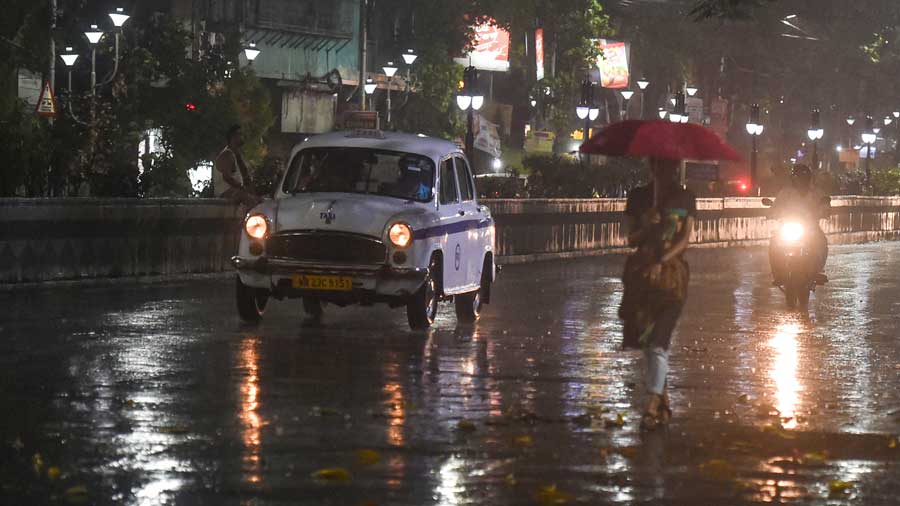North and Northwest India have been in the grip of an unending heatwave ever since early March which has been accompanied by an almost total lack of rainfall. Heavy rainfall over the next few days is expected to break, at least temporarily, the heatwave but the scorching temperatures are expected to return as summer winds on.
The sweltering heat starting “in March established historic records,” says Air Vice Marshal G. P. Sharma, former assistant chief of Air Staff (Meteorology), adding: “Even April will go down in history as one of the hottest.” The Indian Meteorological Department (IMD) confirmed on Saturday that April has been the hottest in 122 years. In a swathe of India from J&K, Punjab, Haryana and Delhi it was a huge 4C above normal.
Delhi had a mean average (the difference between the maximum and the minimum temperatures) of 40C for 28 days. This is against a normal mean temperature of around 36.3C. Sharma points out that even a 1C variation is “huge” and adds that “three degrees is a killing increase.”
Across the border in Pakistan, Jacobabad in Sindh province earned the dubious distinction of being the hottest place on the planet on Monday with temperatures touching 49C. Mohenjo-daro and Larkana, both in Sindh, were close behind at 48C. Such temperatures normally do not occur in April.
Rain in the North soon
Calcutta and Bangalore have been lashed by heavy rainfall in the last 36 hours but the precipitation hasn’t reached Northern India yet. However, rain is expected in a day or two with likely thunderstorms in a large swathe of North India including Punjab, Haryana and possibly parts of Rajasthan and Uttar Pradesh. The IMD predicts that, “heatwave conditions very likely to abate,” over much of north and northwestern India after May 3.
But after the spell of rain and thundershowers, the heatwave is expected to continue through most of May with a strong possibility of the record-breaking temperatures continuing. On May 1, the IMD forecast was for heatwave to severe heatwave conditions in most of West Rajasthan and pockets of Himachal.

Pedestrians shield their faces from the heat with scarves on a hot summer afternoon, in Lucknow PTI picture
Blistering temperatures
On April 30 temperatures were between 43C-46C across northwest and north India. Banda in Uttar Pradesh experienced extraordinarily high temperatures of 47.4C. Lucknow too had a top temperature of 45.1 which is an all-time high for April.
Blistering highs were recorded across Uttar Pradesh with Prayagraj at 46.8 and Jhansi at 46.2 and Agra at 45.2.
Rainfall was almost totally absent during both March and April. In March the rainfall deficit was a huge 89 per cent in Northwest India and April was equally dry with an 83 per cent deficit. The key foodbowl regions, Punjab, Haryana and Rajasthan in fact had a rainfall deficit of 95 per cent.
Fire caused by high temperatures
There is speculation that a massive fire that broke out in the towering landfill in Bhalswa in the north of the national capital was caused by spontaneous combustion caused by high temperatures.
The heatwave has also impacted crops and the wheat harvest has been below expectations. This has happened at a time when global wheat production has been hit by the Ukraine war. Ukraine is a large wheat producer. Prime Minister Narendra Modi had promised wheat exports to plug global shortages if needed. This looks more unlikely now with production below expectations.
Sharma predicts the monsoon will be normal or very close to it – around 98 per cent. However, he warns that, “We could have a rollercoaster ride. It’s not going to be a smooth ride all through the four monsoon months from June to September.” He adds: “Especially the second half I expect will be a bit more volatile.”
Global warming at play?
Can the current heatwave be attributed to global warming? Sharma cautions against coming to such conclusions. He says that global warming will result in more extreme weather events happening more frequently. However, he says it will not result in extremely hot summers every year.
The Intergovernmental Panel on Climate Change report said that heatwaves globally had become more intense and frequent and said human activity was the likely culprit.
The significance of the latest South Asian heat wave has been more about its length rather than the temperature records toppled, climate experts say.
Sharma says global warming will not result in extremely hot summers every year. In 2021, for instance, the temperatures stayed at relatively low levels for most of summer, he notes.











